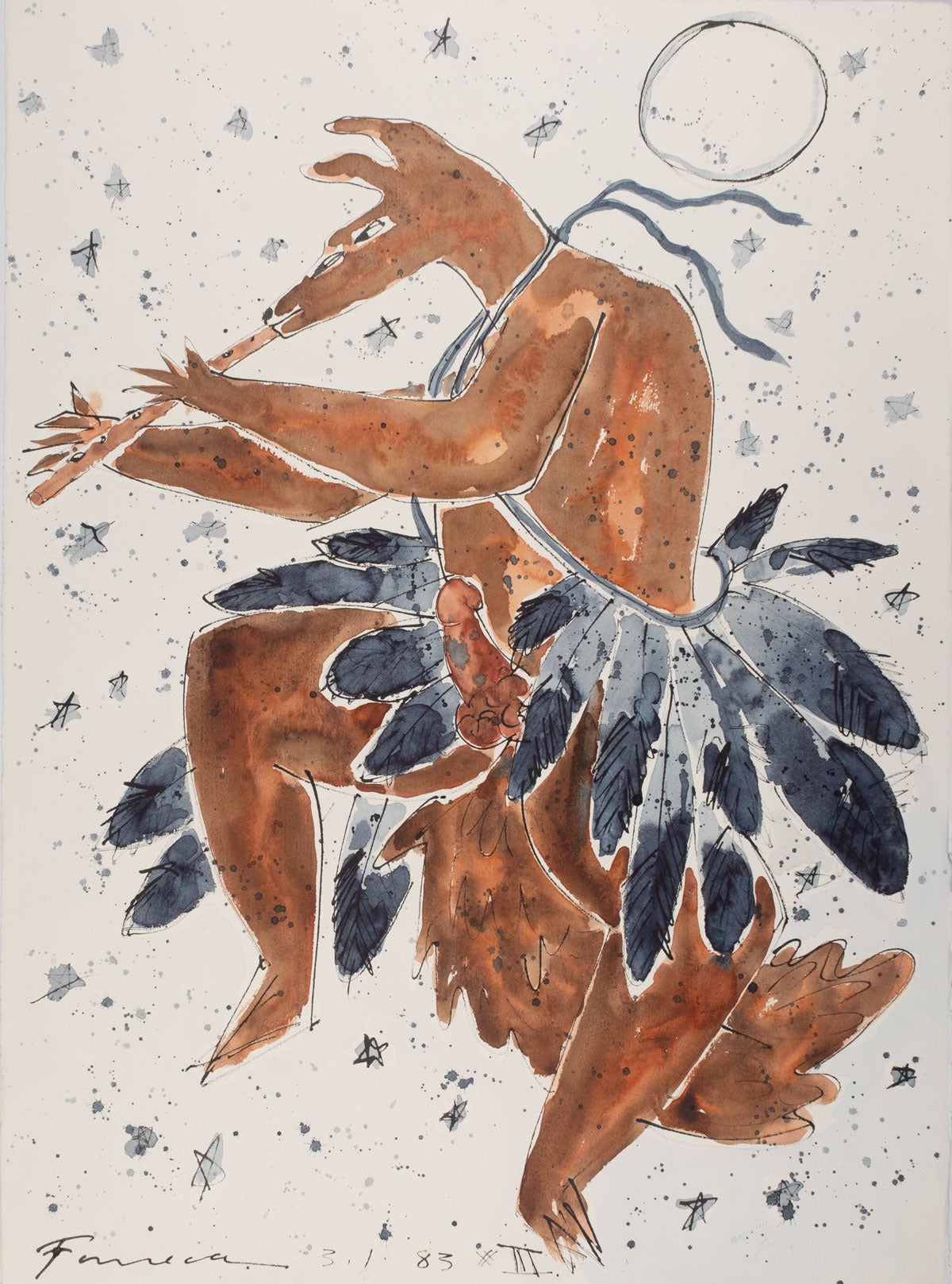A solo exhibition now on view at the Gorman Museum of Native American Art features the artwork of Harry Fonseca drawn from the Shingle Springs Band Collection. Embracing the lifework of this tribal citizen, the Shingle Springs Band of Miwok Indians acquired an important collection of works spanning his career.
The Gorman Museum, at the University of California, Davis, is one of the few university-based Native American Art museums in North America.
The exhibition, Olé Ham Nees: We Call Him Coyote Harry Fonseca Works from the Shingle Springs Band Collection opened Wednesday, Feb. 12 and is scheduled to run through Aug. 21.
The exhibition considers multiple series and stylistic shifts from Fonseca’s earliest pieces reflecting his Nisenan Maidu heritage, the Coyote series for which he is most recognized, the influences of rock art in Stone Poems, the political views of Discovery of Gold and Souls in California, to the abstraction and examination of painting in the Stripes and Seasons series.
Harry Fonseca
Fonseca (1946-2006) was born in Sacramento, of Nisenan Maidu, Hawaiian, and Portuguese heritage, and is an enrolled citizen of the Shingle Springs Band of Miwok Indians. In his 24-year career as an exhibiting artist, Fonseca's work has gone through a number of transformations, but the one constant has been his openness to new influences and sources of inspiration.

Fonseca's earliest pieces draw from his Nisenan Maidu heritage. He was influenced by basketry designs, dance regalia, and by his participation as a traditional dancer. Another level of transformation occurred in 1979 when Coyote emerged as the subject in his prolific and most well-known series. Coyote, the trickster and transformer, is re-contextualized by the artist as a culture hero in a variety of contemporary settings.
Fonseca's continuing interest in rock art led him to develop Stone Poems, an extensive series of works exploring the imagery of petroglyphs throughout the West and Southwest. The canvases, some as large as 6 by 12 feet, suggest the size and scope of petroglyphic panels in situ.
Fonseca's work took a more political turn with the 1992 Discovery of Gold and Souls in California series. Each of these small mixed-media pieces offer subtle variations on the image of a black cross surrounded by gold leaf and partially covered with red oxide. Fonseca has said that this series "is a direct reference to the physical, emotional and spiritual genocide of the Native people of California. With the rise of the mission system, and much later the discovery of gold in California, the Native world was fractured, and with it, a way of life and order devastated."
Into the 1990-2000s, in a radical stylistic shift, Fonseca embraced a nonrepresentational format that reflected his examination of the physical properties of painting through the series Stripes and Seasons.
The museum is located at 181 Old Davis Road, Davis, on the UC Davis campus. This exhibition is sponsored by the Shingle Springs Band of Miwok Indians, The Andrew W. Mellon Foundation Art Museum Futures Fund and the UC Davis College of Letters and Science.
The museum is open Wednesday – Friday, 11 a.m. to 5 p.m., Saturday and Sunday, noon to 5 p.m.
Events will be announced soon.
Media Resources
Media contacts:
- Veronica Passalacqua, Executive Director, Gorman Museum of Native American Art, vpassalacqua@ucdavis.edu
- Karen Nikos-Rose, News and Media Relations, kmnikos@ucdavis.edu
